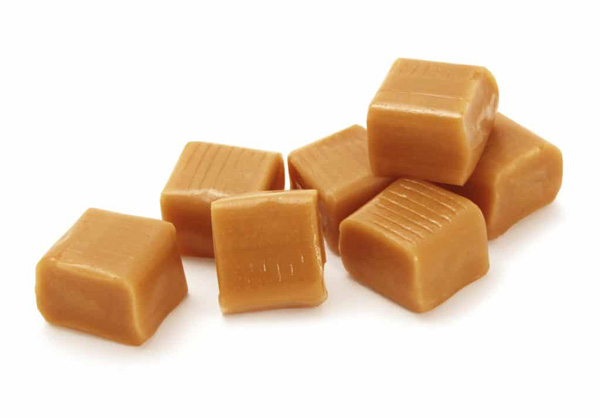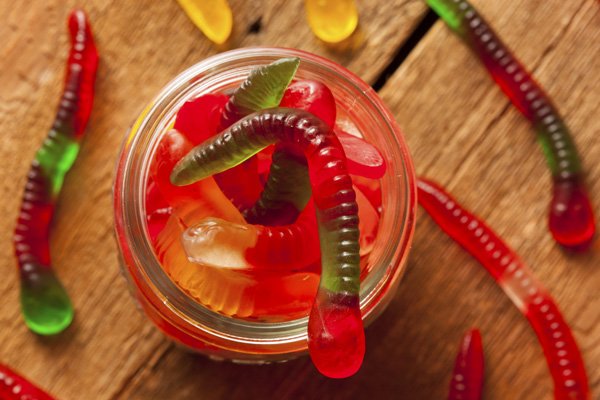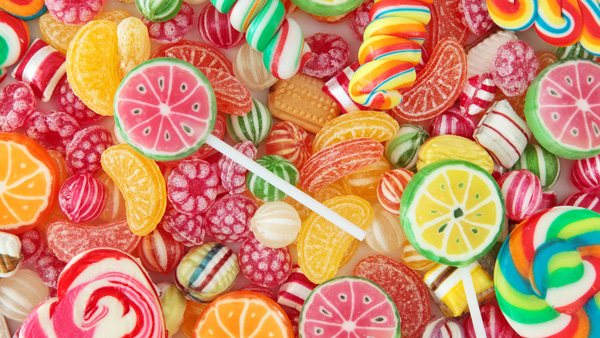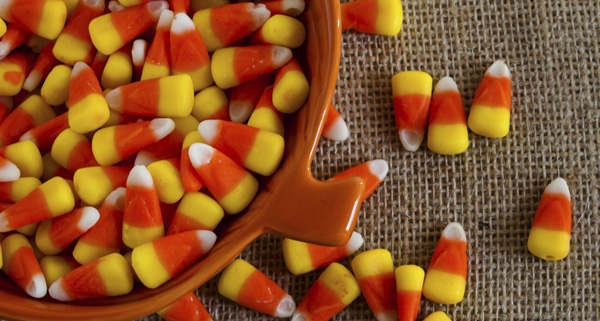Top 5 Worst Halloween Candy for Your Teeth, According to Dentists
by Carly Zinderman, originally published in Reader’s Digest
Chewy candies
The reason candy, in general, is harmful to teeth is that bacteria in the mouth burn the sugar, creating acid as a byproduct, explains Matthew Messina, DDS, spokesperson for the American Dental Association (ADA). The acid then dissolves tooth enamel, which is what causes cavities. Chewy candies, including gummy candies and taffy, are among the worst offenders because they linger and stick around in your mouth, giving them additional time to cause tooth decay. Not to mention some are sticky and strong enough to pull out a filling, bridge, or braces.
Caramels

Caramels are another sticky offender because they stick to teeth—not to mention expensive dental appliances like orthodontics. Like other sweets, caramels are best enjoyed after a meal and brushing and flossing immediately after eating limits the amount of time the stickiness sticks around in your mouth.
Sour and citrus-flavored candies

Sour candies have grown in popularity over the years; and they are bad for teeth on two fronts. They contain both sugar and acid, according to Dr. Messina. Like other candies, limit how many sour candies and lemony sweets you or your child enjoys in order to prevent long-term damage any day of the year.
Hard candies

Hard candies may be a Halloween favorite, but suckers and lollipops actually do more harm than you might realize. Because they are meant to be enjoyed slowly, hard candies and their cousins on a stick linger longer, making it difficult for your saliva to do its job and causing acid to build up in the mouth. Making sure that you properly care for your teeth as soon as the candy is gone can help prevent cavities.
Creamy chocolates

Good news: When it comes to oral hygiene, chocolate tops the list of best bets. Dr. Messina admits to being a fan of chocolate because it dissipates fairly quickly with saliva. Because chocolate doesn’t linger on the teeth for very long, it doesn’t pose as much of a risk for tooth decay as other Halloween candy options. Not to mention that chocolate bars are also among the healthier candy picks for Halloween treats. Like other Halloween candies, chocolates should still be consumed in moderation.


